Kuramadera Temple's Power Contributed Minamoto Yoshitsune to Winning the Genpei War
Kuramadera Temple, nestled deep in Mt. Kurama in the northern part of Kyoto, is renowned for its vortexes and the breathtaking natural beauty of trees that have grown over the years. Upon passing through the Niomon Gate, a meandering path guides visitors to the main hall. In the Heian period (794-1185), the esteemed female writer and poet, Sei Shonagon, penned, “What is far and near is the Kurama's winding path, known as Tsuzura-ori.” The main hall enshrines three deities collectively known as "Son-ten": the Thousand-armed Kannon Bodhisattva (the Moon Spirit), Bishamonten (the Sun Spirit), and Gohomaoh (the Earth Spirit). Standing on the hexagonal design stones called “Kongoshō” in front of the main hall, you may sense these spiritual powers permeating you. This arrangement symbolizes cosmic energy unified by love, light, and vitality. The approach to Kibune Shrine from the main hall is surrounded by towering cedar trees, maintaining a subdued ambiance even during daylight. This path, named "Kine-no-michi" (path of tree roots), derives its title from the exposed three roots lining the way. Legend has it that Minamoto Yoshitsune practiced asceticism against a Tengu, a mythical Japanese creature, in this very location during his childhood.
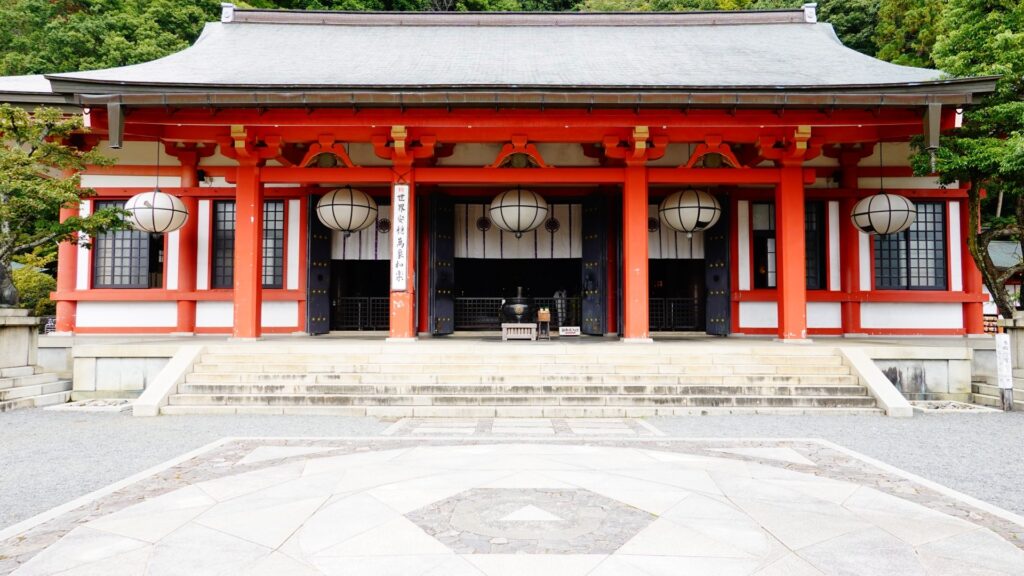
Acquisition of Martial Arts and Strategies to Win
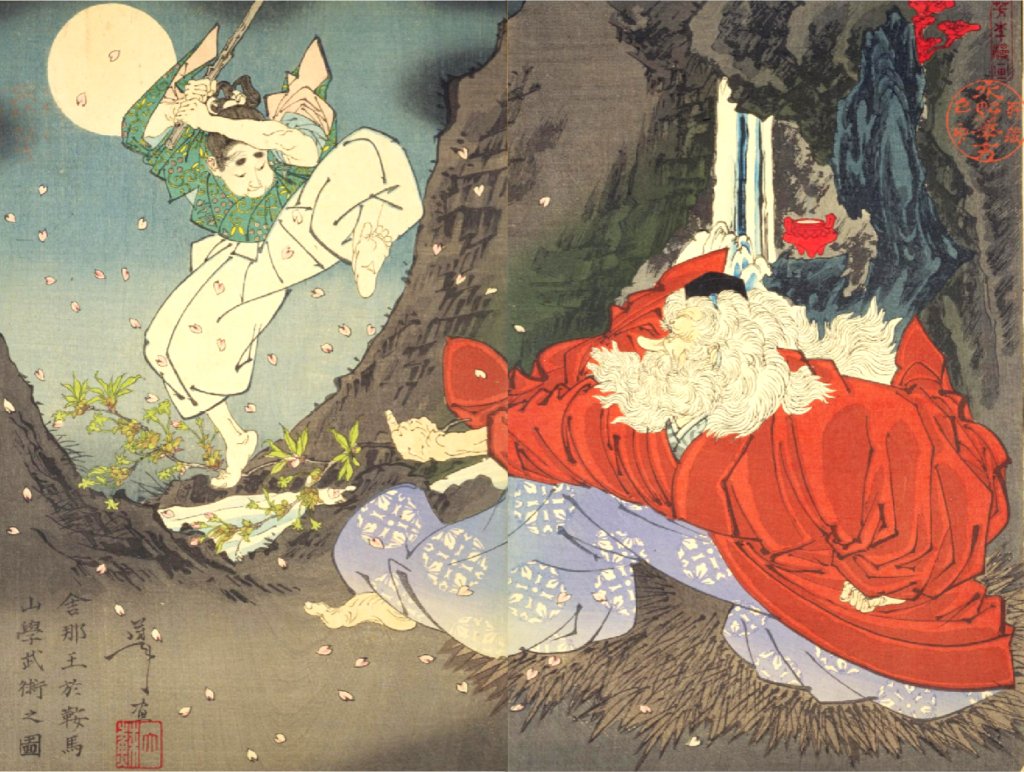
@ 舎那王於鞍馬山学武術之図 (芳年漫画)_NDL
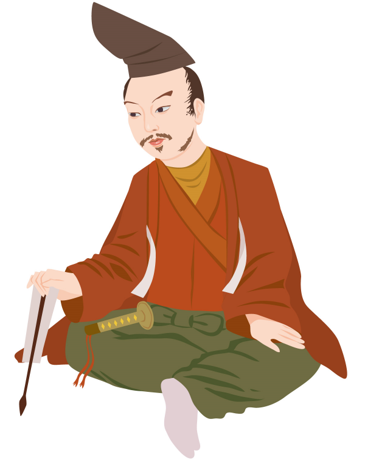
In 1160, at the age of 7, Minamoto Yoshitsune (1159-1189, 源義経) was sent to Kuramadera Temple for fostering. This decision was promoted by his father, Minamoto Yoshitomo (1123-1160, 源義朝), who was defeated and killed by Taira Kiyomori (1118~1181, 平清盛) during the Heiji Disturbance. Despite the expectation for Yoshitsune to adopt the monastic life for his safety, he devoted himself to practicing swordsmanship in the Kurama forest. Eventually, around the age of 16, he fled the temple, refusing the path of a monk. He sought refuge in Hiraizumi, the second-largest city next to Kyoto, governed by the Oshu Fujiwara clan. During his stay until the age of 21, Yoshitsune focused on learning horsemanship.
An Active Role in the Genpei War
As the years passed, in 1180, upon hearing of his brother Minamoto Yoritomo (1147-1199, 源頼朝) launching an attack on the Taira clan, Yoshitsune made his way to join Yoritomo’s army to seek revenge against the Taira clan. Yoshitsune was victorious in three pivotal battles: Ichi-no-tani, Yashima, and Dan-no-ura. These triumphs significantly contributed to Yoritomo’s victory. Let’s delve into his remarkable performance.

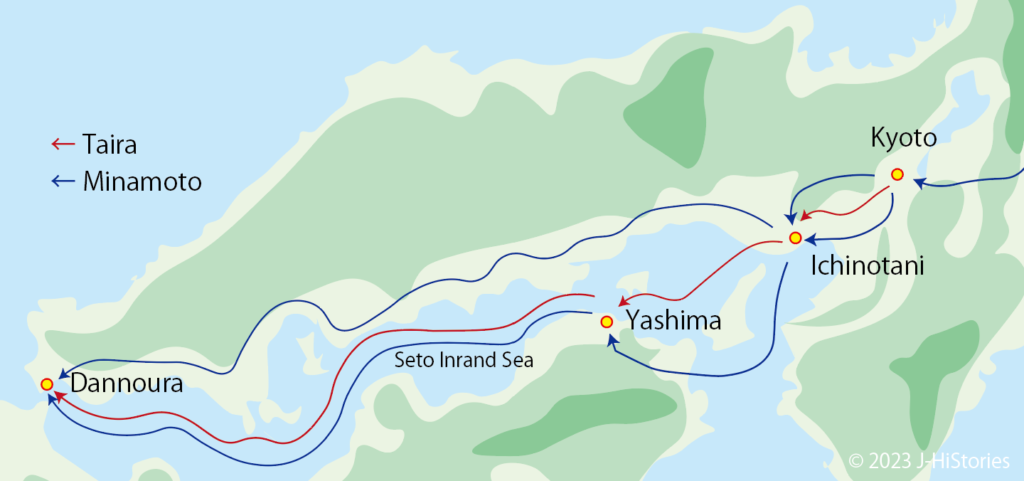
Battle of Ichinotani: Yoshitsune’s Strategy to Utilize the Mobility of Horses
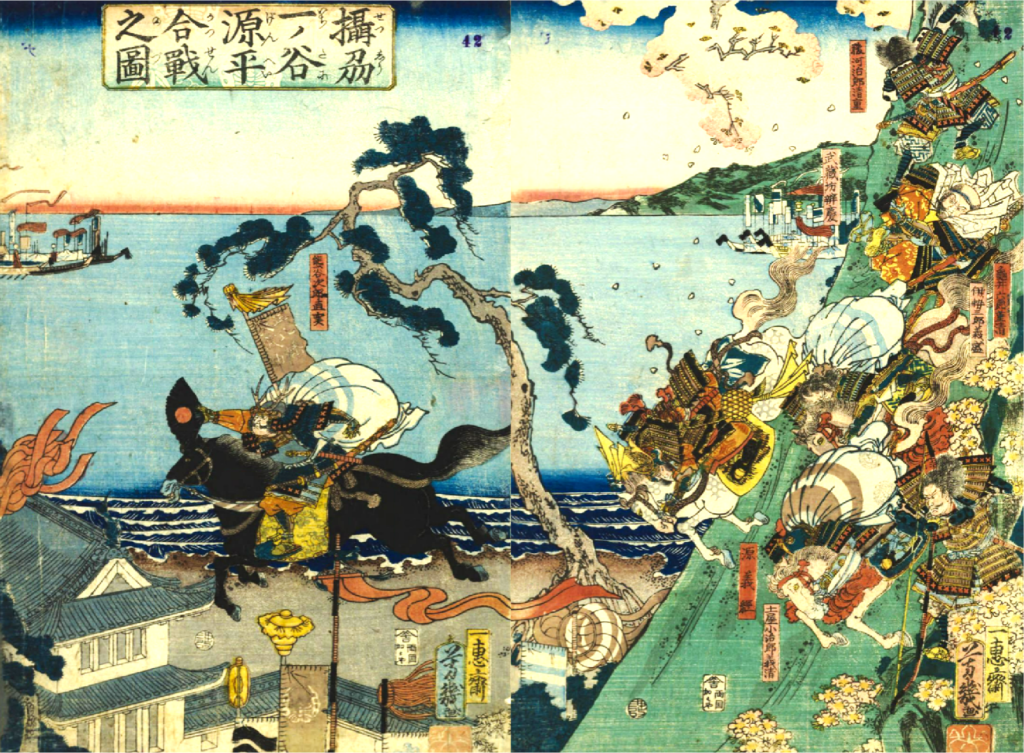
@ 『大日本歴史錦絵』/ NDL
Ichi-no-tani served as the Taira clan’s defensive stronghold in the west of Kobe, situated on a narrow strip of shore between the northern mountains and the southern sea. This made it difficult to attack. However, Yoshitsune implemented a strategic approach by dividing his force. One attacked Taira’s troops along the seashore from east to west, while Yoshitsune, leading a force of approximately 70 mounted warriors, launched an assault from the mountain ridge, known as Hiyodori. The unexpected attack from behind wreaked havoc on the Taira camp, and they fled to the sea. Yoshistune’s remarkable military strategy, grounded in the mobility of horses, influenced later strategists.
Battle of Yashima: Yoshitsune’s Surprize Attack
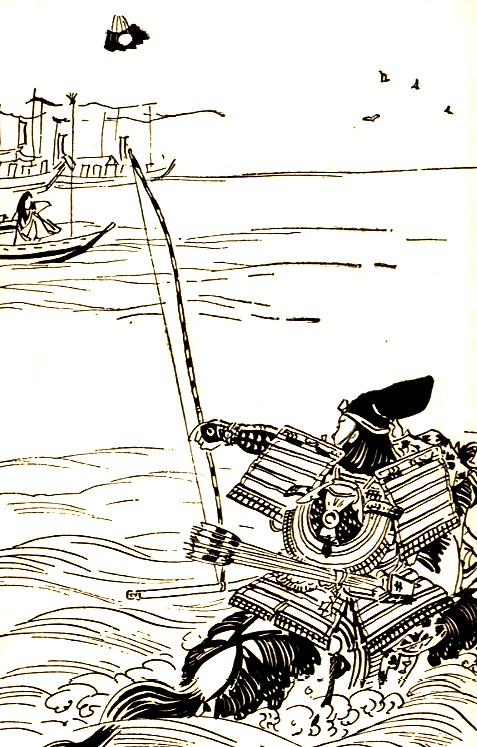
@ 少年九郎判官義経/NDL
Yashima, a peninsula in the west of Kagawa prefecture, extends into the Seto Inland Sea. The Taira forces strategically positioned themselves in a deep cove to counter Minamoto’s forces. This was based on their belief that Yoshitsune would attack from the sea. However, anticipating an attack from the sea by Yoshitsune. Contrary to their expectations, Yoshitsune sailed with the aid of storm winds, allowing his forces to travel from Settsu (Osaka) to Komatsushima City in Tokushima prefecture within a remarkably short time- only 2 to 3 hours, compared to the usual 4 days. Seizing the advantage, Yoshitsune’s horse warriors executed a surprise attack on the Taira from the rear.
The Taira forces, hastily fleeing to the sea, launched a counterattack upon realizing the relatively small size of Yoshitsune’s forces. The ensuing battle reached a stalemate. In the evening glow of sunset, a lone boat from the Taira appeared in front of the Minamoto forces along the seashore. A graceful lady urged Minamoto force to shoot an arrow at a fan. Yoichi, one of the Minamoto warriors, released an arrow, invoking the blessings of deities and Buddha. The arrow hit the fan, causing it to soar into the sunset. Minamoto warriors cheered. Following this event, the Taira forces attempted to land on the shore but were fiercely repelled, ultimately retreating to the western Hikoshima Island in Yamaguchi prefecture. This location is now known as “Dan-no-Ura”
Battle of Dan-no-ura: Yoshitsune’s Victory for Ending the Taira Clan
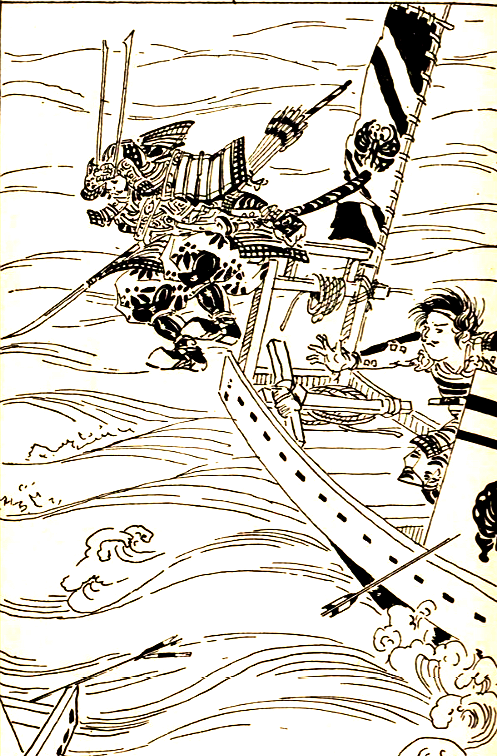
@ 少年九郎判官義経/NDL
Dan-no-ura served as the battlefield for the final pitched battle that took place on May 2nd, 1185. At the outset of the battle, the Taira navy under the command of Kiyomori’s son, Taira Tomonori (1152~1185, 平知盛), rode a rapid tidal current to shower the enemy with arrows, successfully forcing Yoshitsune’s navy into retreat. Despite their lack of experience in naval warfare, Yoshitsune’s forces retaliated, launching a counterattack that resulted in the storming and destruction of the Taira clan’s boats. In close combat, Tomonori attempted to slash Yoshitsune but he escaped by leaping from one boat to another, eight boats in total – performing the renowned “Leaping of the Eight Ships”, known as “Hasso Tobi”. Recognizing the losing fight, members of Taira's family started sacrificing themselves by plunging into the sea one after another. Among them was Nii-no-Ama, Kioyomori’s wife, clutching her grandson, the 81st Emperor Antoku (1178-1185, 安徳天皇), then aged 6 and 4 months, with the sword of one of the Imperial Regalia together, jumped into the sea. It was at this moment that the Taira clan ended.
Fell in A Wanted Man
Despite his glorious return to Kyoto, Yoshitsune became a wanted man by his brother, Yoritomo. Despite being his brother, Yoritomo had positioned Yoshitsune as his retainer and could not allow him to threaten the new order being created in the eastern provinces. This was due to Yoshitsune drawing anger from Yoritomo for accepting an official court rank appointment without Yoritomo’s prior permission. This action went against Yoritomo’s principles of maintaining independence from the Imperial Court to establish a samurai government. Yoshitsune drifted into Hiraizumi counting on the Oshu Fujiwara clan.
Escape to Yoshino, Japan Seashore, and Hiraizumi
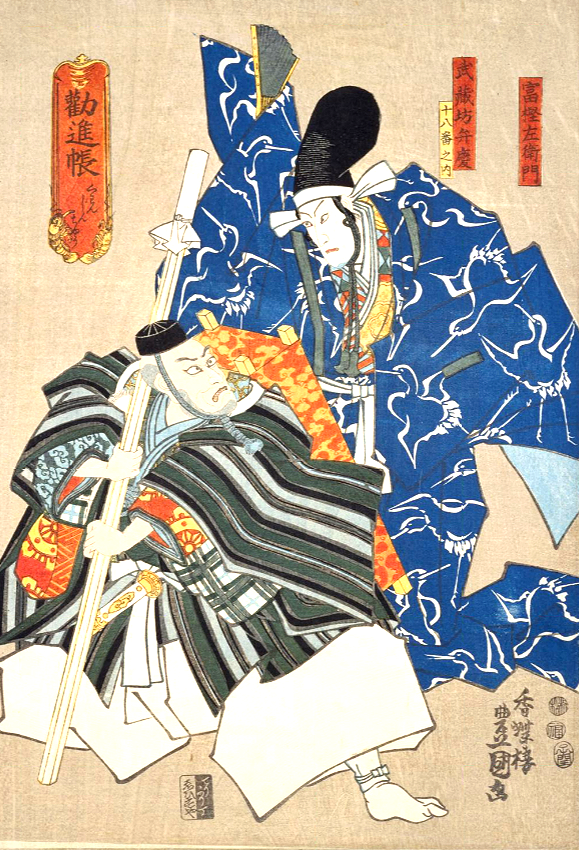
@ 香蝶楼豊国『勧進帳 武蔵坊弁慶・富樫左衛門』,ゑひすや. /NDL
His escape journey took him with his lover, Shizuka-Gozen, to Yoshino in Nara. Founded by Yoritomo’s forces in Yoshino, then, only Yoshitsune traveled through the Hokuriku distinct along the Japan Sea, accompanied by Benkei, who disguised themselves as mountain priest. Upon reaching the Ataka Barrier, Benkei read out a false Kanjincho (a prospectus to gather donations for establishing a temple) to facilitate their passage through the gate. The work features a renowned scene portraying two superheroes, with Benkei striking his master, Yoshitsune, in an attempt to make him appear as a lowly porter, driven by desperation to save their lives. Though the guardian of the Ataka Gate realized the ruse and identified their true identities, he was deeply impressed by Benkei’s unwavering love for his master, allowing them to pass.
* Kanjincho: One of the most popular Kabuki based on the Noh play created by the tragic Yoshitsune.
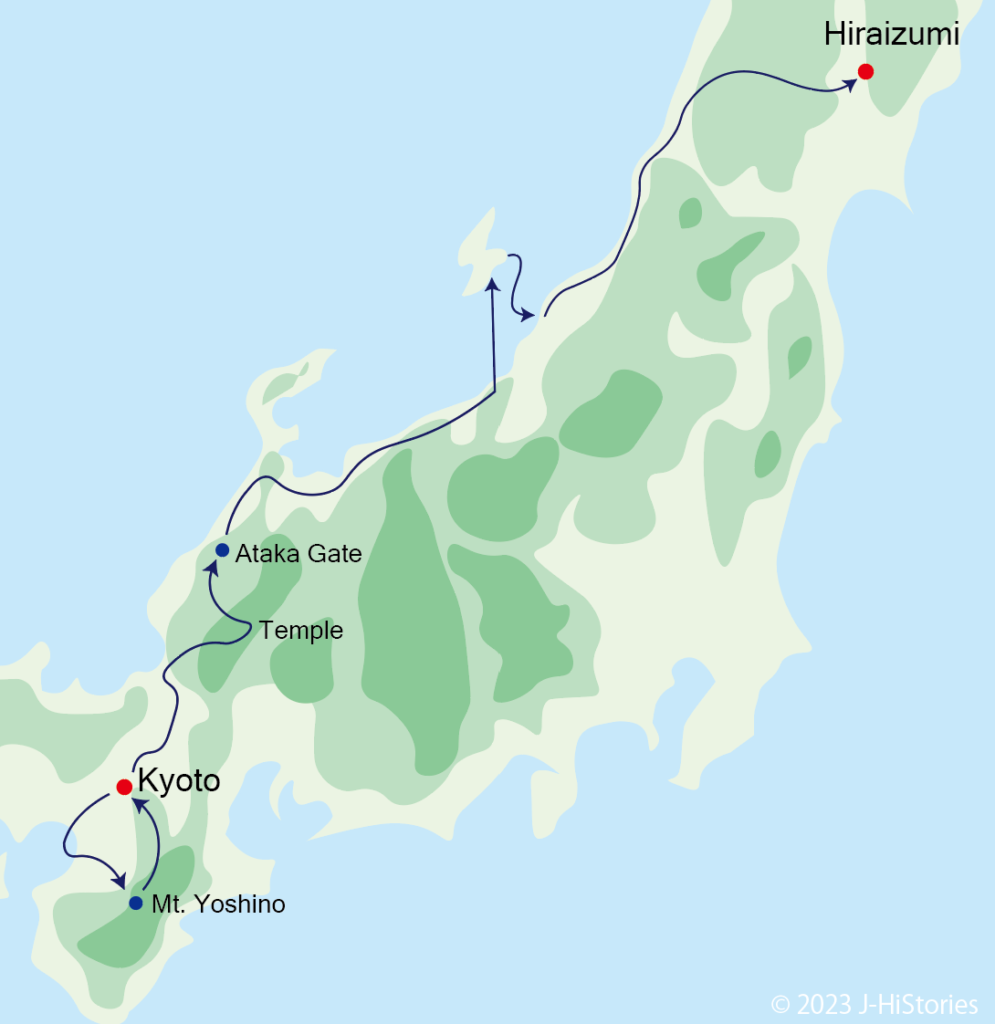
However, Yoshitsune could not shale off Yoritomo’s repeated orders to the Oshu Fujiwara clan to eliminate him. Refusing to fight against the Oshu Fujiwara clan, Yoshitsune hid in the Jibutsu-do-hall in Hiraizumi and immersed himself in reading the sutras. Upon completing this practice, he killed himself in April 1189 at the age of 31. Yoshitsune has since become a legendary superhero for generations.
Critical Contribution to the Establishment of the Kamakura Shogunate
Feel the spiritual power as you traverse Mt. Kurama and the temple, contemplating Yositsune’s exceptional military strategy that played a crucial role in contributing to his brother Yoritomo’s establishment of the Kamakura Shogunate- the first samurai government in Japan. Yoshitsune was the god of war. On the other hand, Yoritomo was a hard-headed politician.
Minamoto Yoshitsune Timeline
| Year | Event | Yoritomo/*Yoshitsune | Period |
| 1147 | Minamoto Yoritomo was born | Age=1 | Heian |
| 1156 | Hogen war, Kiyomori supported Emperor Go-Shirakawa | 10 | |
| 1159 | Yositsune was born | *Age=1 | |
| 1159 | Heiji war, Kiyomori defeated Yoritomo's father | 13/*1 | |
| 1160 | Yoritomo was exiled to Izu. Yoshitsune was sent to Kuramadera Temple | 14/*2 | |
| 1167 | Taira Kiyomori became Grand Minister of State | 21 | |
| 1169 | Yoshitsune left Kuramadera Temple for Oshu Region | *11/10 | |
| 1174 | Yositune left Kuramadera Temple and moved to Hiraizumi | *16 | |
| 1180 | Minamoto Yoritomo raised an army to attack Kiyomori and his family | 34/*22 | |
| 1180 | Yoshitsune left Hiraizumi to join his brother, Yoritomo's forces, | *22 | |
| 1181 | Kiyomori died of deceases | 35/*23 | |
| 1183 | Go-Shirakawa gave Yoshinaka his imperial order to hunt down Kiyomori’s remaining family | *25 | |
| 1183 | Kiyomori's family escaped from Kyoto attacked by Minamoto forces | *25 | |
| 1183 | Go-Shirakawa got angry about Yoshinaka warrior's outrage in Kyoto, but conversely he was trapped. | *25 | |
| 1183 | Yoshitsune released Go-Shirakawa | *25 | |
| 1183 | Go-Shirakawa gave Yoshitsune an Imperial order to hunt down Yoshinaka’s followers and Kiyomori's family | *25 | |
| 1184 | Genpei War started | *26 | |
| 1184 | Yoshitsune won at Battle of Ichi-no-Tani | *26 | |
| 1185 | Yoshitsune won at Battle of Yashima | *27 | |
| 1185 | Yoshitsune won at Dannoura War | *27 | |
| 1185 | Taira Clan ended due to Kiyomori's family fell at the Dannoura War. | 39/*27 | |
| 1185 | Emperor Antoku and the Imperial Sword sank into the sea | 39/*27 | |
| 1185 | Relationships between Yoritomo and Yoshitsune worsen | 39/*27 | |
| 1185 | Go-Shirakawa gave Yoshitsune an Imperial order to hunt down Yoritomo | 39/*27 | |
| 1185 | Go-Shirakawa gave Yoritomo an Imperial order to hunt down Yoshitune | 39/*27 | |
| 1185 | Yoshitsune escaped from Kyoto to Yoshino | 39/*27 | |
| 1185 | Go-Shirakawa appointed Yoritomo as the military and police power and approved as the ruler of eastern Japan | 39/*27 | |
| 1185 | Minamoto Yoritomo established Kamakura Shogunate | 46 | Kamakura Period |
| 1187 | Yoshitsune escaped from Yoritomo's forces to Hiraizumi relying on Oshu Fujiwara Hidehira | *29 | |
| 1187 | Hidehira dies of illness | *29 | |
| 1189 | Yasuhira succumbed to Yoritomo's power and forced Yoshitsune to commit suicide | *31 | |
| 1189 | Yoshitsune died | *31 | |
| 1189 | Yoritomo defeated Yasuhira. Oshu Fujiwara clan ended | 43 | |
| 1192 | Go-Shirakawa passed away | 46 | |
| 1192 | Minamoto Yoritomo became Shogun of Kamakura Shogunate | 46 | |
| 1199/01 | Yoritomo passed away | 53 |
Recommendations to visit
Kuramadera Temple
- Access: 1 hour from Kyoto Station. Take bus #86, #88, #206, or #298 to "Shichijo Keihan-mae (七条京阪前)”. Take the Keihan Line to "Demachiyanagi Station (出町柳)". Transfer to the Eizan Dentetsu Line and get off at Kurama Station. A 10-minute walk up the hill.
Tsurugaoka Hachimangu Shrine
- Access: 1 hour from Tokyo Station to Kamakura Station on JR Yokosuka Line bound for Kurihama. Get off the train at Kamakura Station. A 10-minute walk


